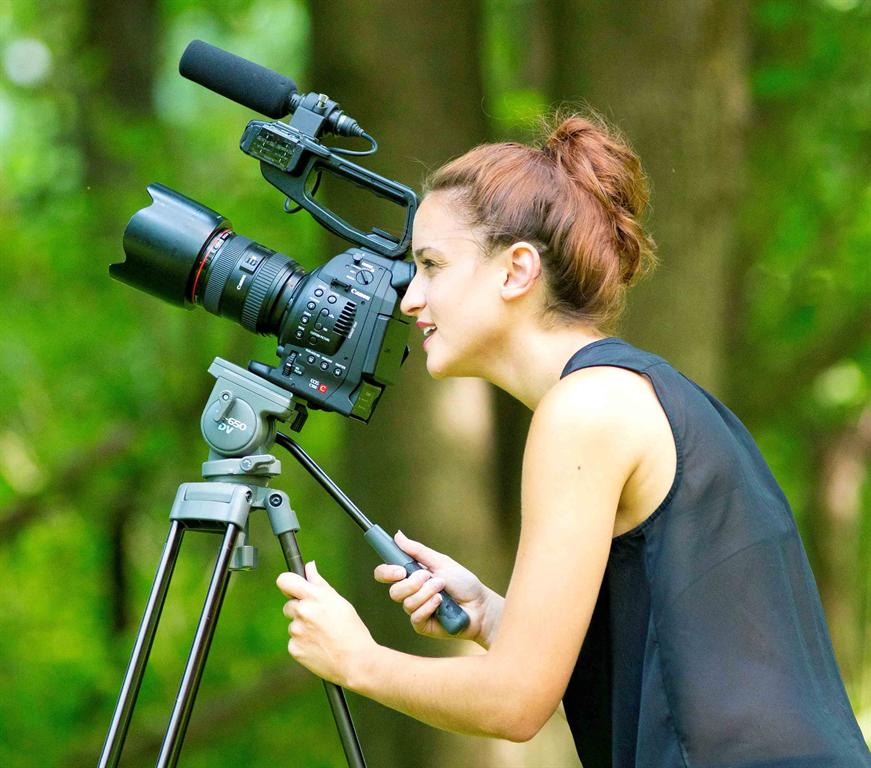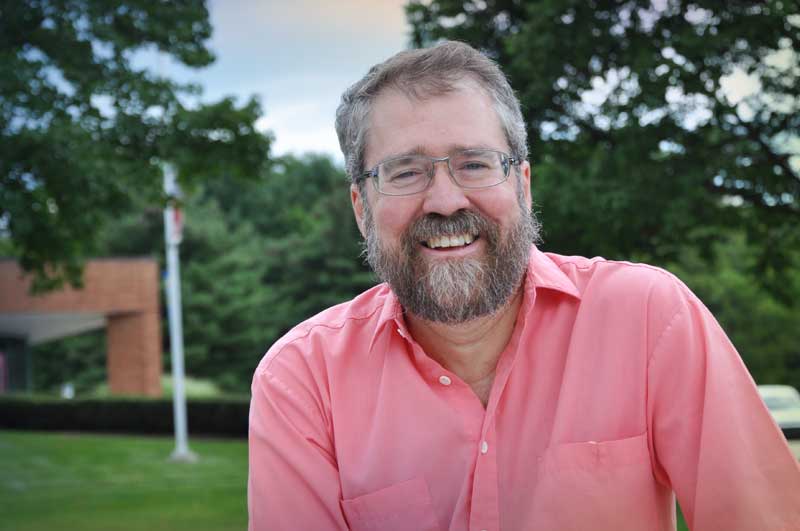Canon’s EOS C100

Canon’s entry into the Cinema Series begins with the EOS C100. The camcorder features a Super 35mm sensor and a DSLR-type body with longer shooting times than any DSLR on the market. It uses EF-mount Canon lenses and allows upgrading to Cinema Series lenses, giving you all of the features of a video camera with the ease of use normally associated with a DSLR.
FEATURES
The entry-level EOS C100 records to SDHC or SDXC media and provides dual memory card slots. Some of the many features that separate the C100 from its DSLR brethren include a built in two- or four-stop neutral density filter, use of the camera’s viewfinder or an articulated LCD screen for viewing what’s being captured, two XLR audio connectors; two different record buttons, shooting times as long as your media size will allow, and batteries that may just actually keep things powered for the length of your shoot.
With ISOs ranging from a low of 320 to a high of 20,000, the camera exports a non-compressed HDMI signal. The video signal is recorded in AVCHD’s MPEG- 4 H.264 using 4:2:0 color space. There are essentially three shooting modes: 24 Mbps (1920 x 1080) at 60i, 30p, 24p, 50i, and 25p; 17 Mbps (1920 x 1080) at 60i, 30p, 24p, 50i, and 25p; and 7 Mbps (1440 x 1080) at 60i, 30p, 24p, 50i, and 25p for those who may be concerned about file sizes
Another area where the C100 really shines is in its Custom Picture setting. Professional shooters often desire a specific “look” and the C100 allows these users to make adjustments to the black level, gammas, knee, color saturation, sharpness, skin detail, and color matrix, with their preferences stored on the SD memory card. There are also several presets from which to choose.
Most of the remaining camera features are similar to those found in other Canon DSLRs, including manual adjustment of iris, shutter speed, ISO, white balance, zebra, peaking, waveform monitor, and magnification.
IN USE
Get the TV Tech Newsletter
The professional video industry's #1 source for news, trends and product and tech information. Sign up below.
The Canon EOS C100 is an amazing camera, but it does take a bit of getting used to. Customizing settings gives the shooter much greater control over their shooting environment. However, I found that it takes quite a bit of menu diving to access these set-up options initially. The miniscule thumbwheel/joystick is probably the smallest I’ve ever seen and this also takes some time getting acquainted with. The students in all of my classes have fallen in love with the camera rather quickly, but none are fond of the little joystick—something that’s probably very easy to break.
On location, I attach an eight-inch field monitor to the camera’s hotshoe to allow my entire class to observe the shot. While this is nice, there is one thing I’d like changed when such an HDMI-connected monitor is used, and this is the inclusion of the “Mag” graphic (when magnification is selected) to appear on the external monitor. As things work now, when this is selected, “Mag” appears in yellow and the camera LCD screen magnifies, but it’s not present on externally connected monitors.
I believe the footage shot with the camera has better color separation than our standby Canon EOS 5D Mark III. Using the same lenses, the images look better on the C100 when compared with similar images captured on the Mark III.
However, the editing options available are a little more challenging. When entering footage captured on the Mark III into Final Cut Pro 7, I’d use MPEG Streamclip to convert the AVCHD H.264 files to Apple Pro Res 422 (HQ). I found that video files recorded on the C100 are not accessible on MPEG Streamclip and must be imported using FCP 7’s Log and Transfer. It’s just another step, but old habits sometimes die hard.
On the plus side of things, having real XLR audio connectors certainly speeds up field sound production, as it does away with the requirement for an external sound recorder and then having to sync everything later in post. The camera also makes it simple to make audio level adjustments.
And I really do appreciate the option for shooting in 60i, 30p, and 24p frame rates and being able to control the gammas and black levels. To me, the C100 comes across as more “professional” than a lot of other cinema-shooting DSLRs, and I believe that the footage it delivers has a quality that is enhanced when compared to our other Canon stablemates.
Once you get use to the setup and handling of the C100 (and it really doesn’t take that long), you may find it difficult to go back to shooting with other “antiquated” DSLR models. (And I really didn’t think that I would be saying that anytime soon.)
SUMMARY
I believe that the C100 and its siblings are going to be the pathway to the future. All of the best features of a DSLR have survived and you have more capability in audio and video without a much larger footprint.
Chuck Gloman is an associate professor and chair of the TV/Film department at DeSales University. He may be contacted atchuck.gloman@desales.edu.
FAST FACTS
APPLICATION
Whenever Super DSLR features and professional capabilities in a compact package are needed for image capture
KEY FEATURES
Multiple recording options, customizable settings, professional internal audio, uncompressed HDMI out, dual media slots for extended shooting time, interchangeable lenses, LCD and viewfinder operation, extended battery, a Super 35mm sensor and built in ND filters
PRICE
Street price (body only), $5,499
CONTACT
Canon USA
631-330-4800
www.usa.canon.com
Chuck Gloman is Associate Professor with the TV/Film Department at DeSales University.

